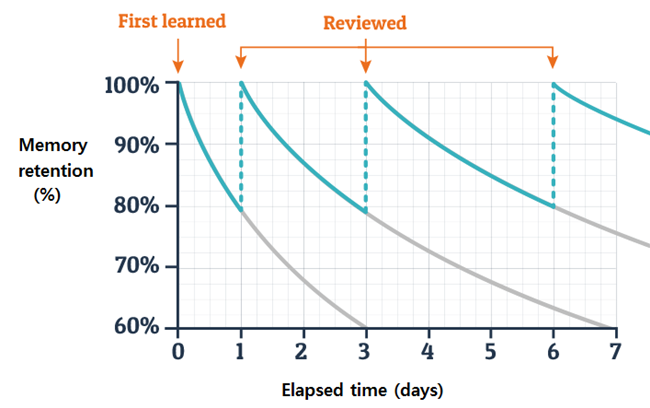Microlearning: What it is and 10 reasons why it's best for Company Training

Company training can be the bane of participants and organisers alike. On the one hand, organisers often face the choice of herding a grumpy, unwilling workforce (that may be spread across states, countries and continents) into one centralised location at great expense and with supreme logistical prowess. On the other, everybody has a different propensity for learning meaning fast learners will get bored and slow learners will tune out. These are just two reasons why HR and L&D professionals should consider using Microlearning.
What is Microlearning?
Microlearning is a form of eLearning where lessons are presented in short, easy-to-digest, repeatable, bite-sized chunks. It’s effective because it focuses on one brief topic at a time and has fewer barriers to completion due to lessons only taking minutes to complete.
What makes Microlearning a better form of eLearning?
Traditional eLearning courses are very expensive to create, take a long time to produce and are often implemented and distributed by different Learning and Development (L&D) professionals to the Instructional Designers who created the course (and who subsequently don’t see the results). It also gets out of date very quickly and typically gets produced in fits and spurts with major, sporadic CapEx investments that companies are unwilling to regularly make.
Traditional eLearning is also created with an eye on distribution via separate software, called Learning Management Systems (LMS). Many of these systems typically have roots going back more than 20 years and haven’t been updated much. Consequently, all of the bells and whistles you’d expect from modern interactive software is eschewed in favour of tedious multiple choice style Q&As that is likely to function on as many LMSs as possible. So how does microlearning improve matters?
10 Benefits of Microlearning
1. Easy to create and update
With microlessons being so short, they are typically easy to create. Many microlearning systems use a variety of interactive templates where questions and answers can be simply uploaded and presented in a multitude of different, engaging ways. This also means they are simple to update. Why continue to use an old case study from 1987 when you could quickly allude to something from last night’s news? It’s far more engaging.
2. Mobile Learning
Few people like being stuck in front of a desktop computer screen for hours on end and few people have the time. Many LMS courses will work on a mobile phone, but few are optimised for the technology – the text is too small and the interface is fiddly. With mobile learning (aka m-Learning) dedicated microlearning phone apps can be used which allow people to perform training wherever they are and when they have a few, spare minutes. In a world where Millenials and Gen-Z are always in contact with their phone, it makes for a convenient (and preferred) form of training.
3. Onboarding
Hiring new employees is far from simple. Once you’ve found them and they’ve accepted your job offer, actually hoping they don’t get their heads turned by better offers before they start becomes a real issue. If they do make it through the door then another employee will often have to take time away from their own work to show them the ropes. With microlearning, you can send short courses to an employee before they even start: lessons which show them where to go, where the facilities are and who to report to. They can subsequently be onboarded and feel valued before they join.
4. Chunking strategy
The human brain can only retain seven pieces of new information before it gets pushed out or overwritten by new information. Consequently, delivering training in short, easy-to-digest, bite-sized chunks is much more effective. It’s why learning a 10-digit phone number like 04925556171 immediately creates mental barriers to retention. However, chunking it into three parts like 0492 555 171 makes it much simpler to remember.
5. Gamification and Prizes
When learning doesn’t feel like learning it becomes far more effective. Transforming lessons into competitive games where points are earned for correct answers and prizes awarded for achieving high scores and (completion rates) means that learners will be far more willing to take courses and far more likely to retain the information presented therein. Some microlearning platforms allow for simple questions and answers to be displayed in gamified formats. They can also offering prizing mechanics: in such instances, offering many small prizes (like cups of coffee) is more effective than offering the chance to win one large one.
6. Spaced Repetition
In the late 19th Century, Herman Ebbinghaus postulated the forgetting curve: the realisation that learned knowledge will be forgotten over time if not frequently revisited. Microlearning can combat this through its propensity for Spaced Repetition. This is the practice of repeating a lesson at increasing intervals until it gets locked in to long-term memory. Repeating short lessons is far simpler than repeating long courses and it also allows learners to focus on content they’re struggling with rather than information they’re comfortable with.

7. Peer Learning
Why employ an expensive third-party to train your employees on internal soft skills, clients and practices when the most efficient teachers are the experienced people already at your workplace? Microlearning is so simple to produce that even those without teaching skills can produce effective and engaging lessons that learners will be better able to relate to. This could involve old Ted who’s operated a certain machine for 20 years telling you about its foibles that don’t appear in the manual; it could be Doris the tea-lady showing you how to use the office coffee machine; or it could be Jo the salesperson telling you that an important client hates shaking hands, is severely gluten intolerant but absolutely loves single-origin chocolate.
8. Just-in-time (JIT) Training
JIT training is the practice of learning something right before you need it. Microlearning again is ideal for this thanks its short microlessons. A typical scenario would be a travelling salesperson pulling up to yet another client’s premises and quickly learning about who they’re talking to, what their history is and what the key issues are likely to be.
9. Learning at their own pace
People learn at different speeds. Forcing a crowd to learn at the same rate is naturally ineffective as fast learners will get bored by slow lessons and slow learners will get left behind in fast-paced lessons. Microlearning allows people to perform lessons at their own convenience, whether that’s in their own time or while commuting to work. Some companies even offer an additional training payment for those employees who train out of hours.
10. Distribution
Lesson file sizes can be gargantuan for lengthy courses, especially if video is involved. Sending it round a company can therefore easily clog corporate networks or be rendered inaccessible to those with poor internet. Here the benefit of microlearning is self-evident but it offers another benefit too: version control. Having one, up-to-date, small file that’s easily accessible in one location, across multiple devices, is far easier to manage than sending out physical media (or large digital media files) into the wild as you can’t be sure which version of a course a learner will interact with.
The importance of training
In recent years, LinkedIn has published an annual WorkPlace Learning Report. Its most recent editions highlight top-level stats such as:
- 94% of employees would stay at a company longer if it invested in their career
- The Number 1 reason employees feel held back by learning is because they don’t have the time
- 74% of talent developers plan to make changes to their learning programs to accommodate Gen Z
- 2019 is the year of the skills gap
You’ll see the latter point echoed among many of 2020’s Channel Chiefs in CRN’s Channel Academy. As LinkedIn puts it, “Macro trends such as digital transformation and the decreasing shelf-life of skills are leaving organizations to play catch-up as they try to hire and develop the right skills—and talent development is tackling the challenge head-on in a myriad of ways.”
Josh Bersin is a world leader when it comes to corporate training. He points out that eLearning is a $200B industry annually and states, “Consider applications like sales training (every company does this), safety training (every manufacturer or distributor does this), leadership development (a US$14 billion market), and all types of technical training for engineers and technicians. What we ultimately want to do is embed learning into the platform in which they work, so the systems can coach and train you to be better on the job. And this is where all this digital learning is likely to go.”
To find out which microlearning platform is best for you, check out eLearning Industry’s Top 10 Best Microlearning Platforms or this microlearning blog from Venngage.











